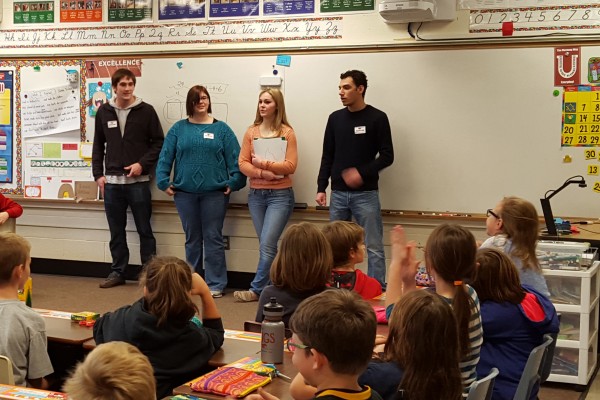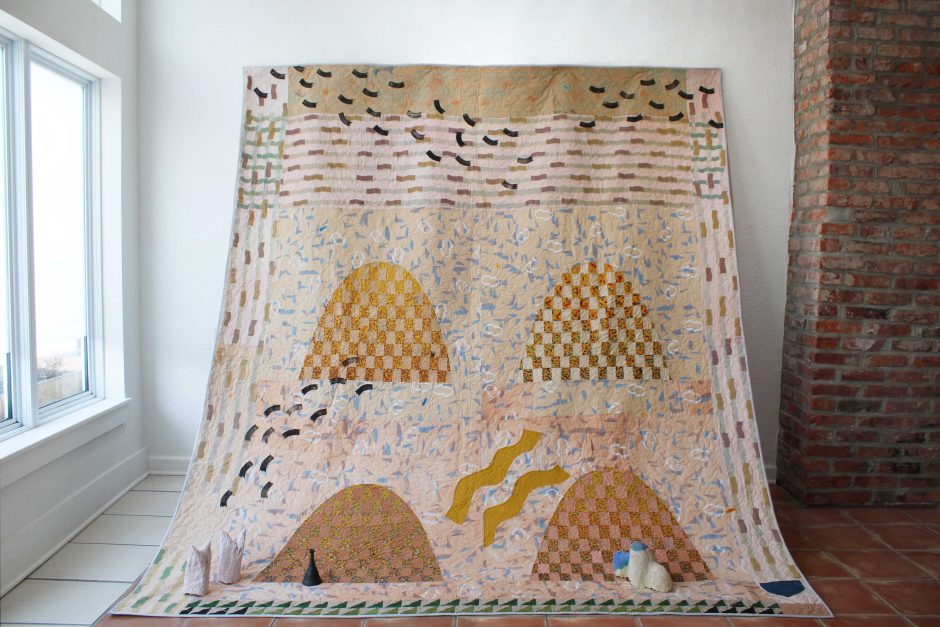Students teach about bat conservation
Four Cornell College students visited a class at Washington Elementary School in Mount Vernon, Iowa, to share information about bat conservation in Iowa.
The group, Chris Baluja, Sami Vetter, Cody-Lee Bankson, and Joe Keller, were part of biology professor Tammy Mildenstein’s “Wildlife and People” course, where they learned about the positive and negative impacts humans have had on nature.

“The class focuses on wildlife and human interactions through time, which includes all of the negative impacts that have led to the current extinction crisis, but also on positive ways we can effect wildlife, which includes current conservation efforts,” Mildenstein said. “The students formed groups to learn in depth about a current wildlife topic, which they have researched in the library and by contacting experts in the field.”
The groups were also asked to come up with ways they could affect conservation, she said.
Baluja, Bankson, Keller, and Vetter researched bats in Iowa and realized that they could help bat conservation efforts by raising awareness, especially among young people. They reached out to teachers at Mount Vernon Elementary and were invited to speak to third grade students about bats.
Vetter said the group started by asking the students what they already knew about bats, and were surprised to find the students already knew a lot, and that many had bat boxes at home.
“Their background knowledge on bats was really helpful, as it allowed us to talk more descriptively about the northern-long eared bat, how it benefits humans, and its population decline due to a disease named white-nose syndrome,” Vetter said. “We explained that the syndrome infects the ears, nose, and wings of the animal and causes bats to come out of hibernation when there is a shortage of food supply, which eventually leads to their starvation. Since Joe, Cody-Lee, Chris, and I were working with third graders, we figured we would need to make our presentation interactive. Our group came up with the idea to make paper bat ornaments with bat facts and a website giving instructions on making a bat box attached to the back.”
Baluja said he was amazed at how excited the students were about bats.
“They were just waiting for someone to ignite their imagination and allow them to feel like they were a part of the bigger picture,” he said. “That is why we did this; to teach our youth about how they can make a difference in the world. We had them write notes and pictures as a way to raise awareness and help save the bats, which we are posting around the residence halls for Cornell students to see.”



